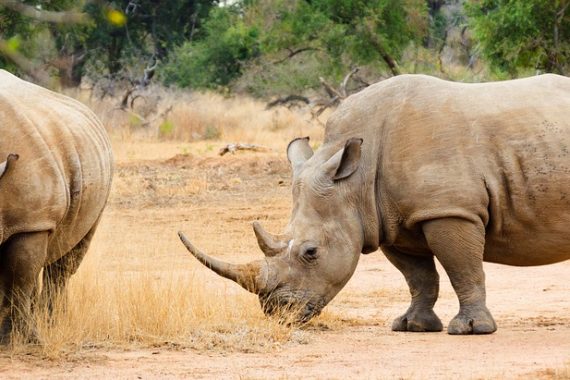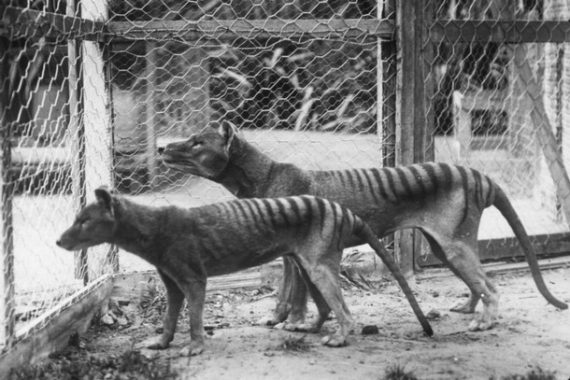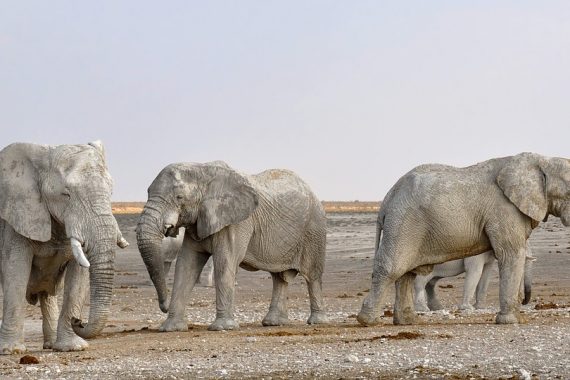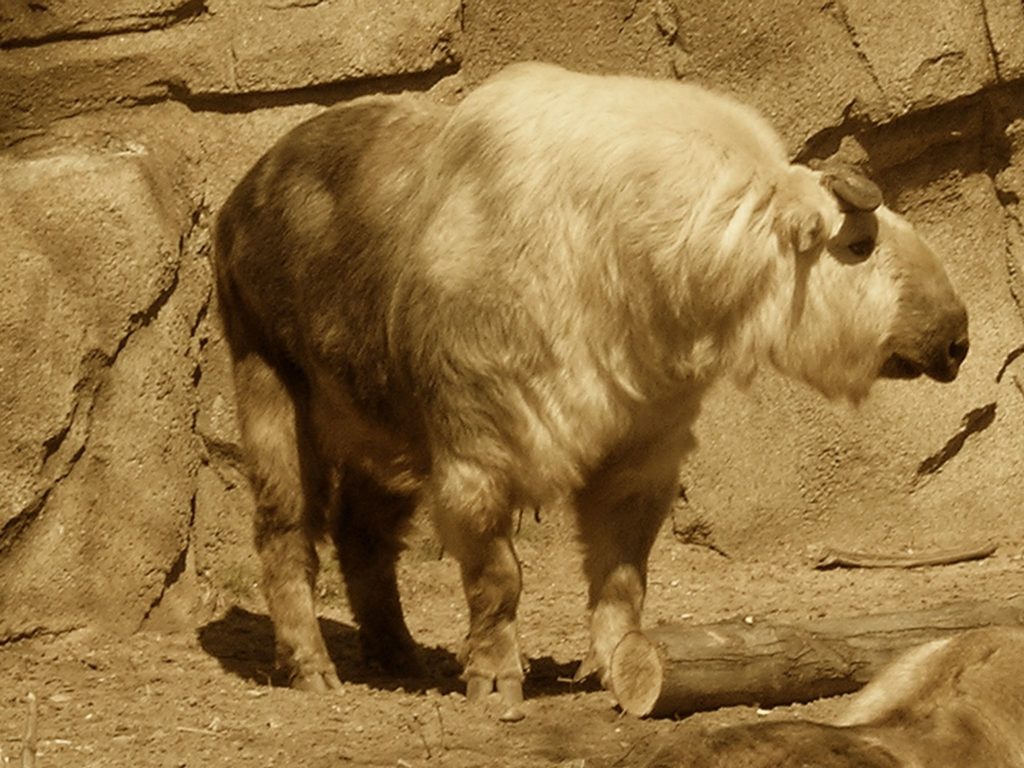 One of the world’s most unique mammals, the Takin, is heading towards extinction. These ungulates are so unusual looking they have been described as a “goat antelope” or a “Gnu goat.” Some have even called them a character from a Dr. Seuss novel. Their unique characteristics have allowed them to live and thrive in the alpine regions of Asia.
One of the world’s most unique mammals, the Takin, is heading towards extinction. These ungulates are so unusual looking they have been described as a “goat antelope” or a “Gnu goat.” Some have even called them a character from a Dr. Seuss novel. Their unique characteristics have allowed them to live and thrive in the alpine regions of Asia.
Takin History
The Takin is from the Bovidae family. They are further divided into the Caprinae subfamily. This includes sheep, goats and Musk Ox. There are four subspecies of Takin (Budorcas taxicolor). These include:
- Bhutan Takin ( t. whitei)
- Mishmi Takin ( t. taxicolor)
- Sichuan Takin ( t. tibetana)
- Golden Takin ( t. bedfordi)
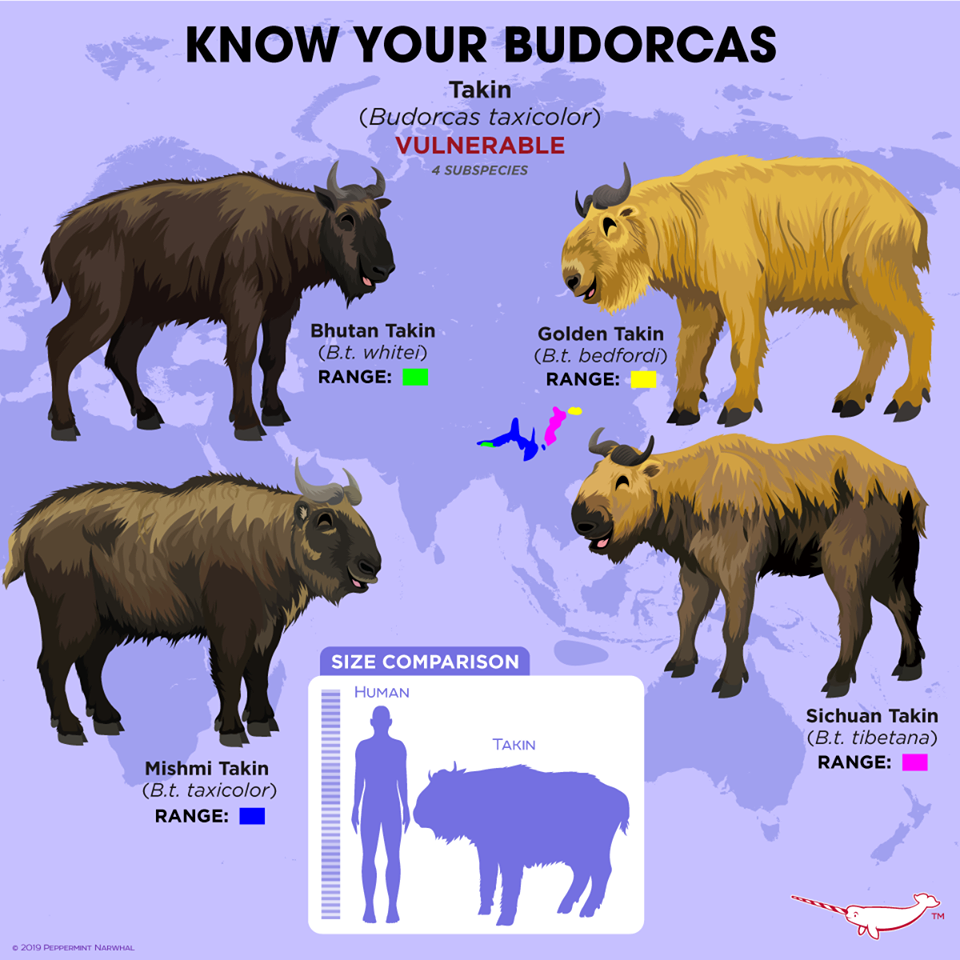
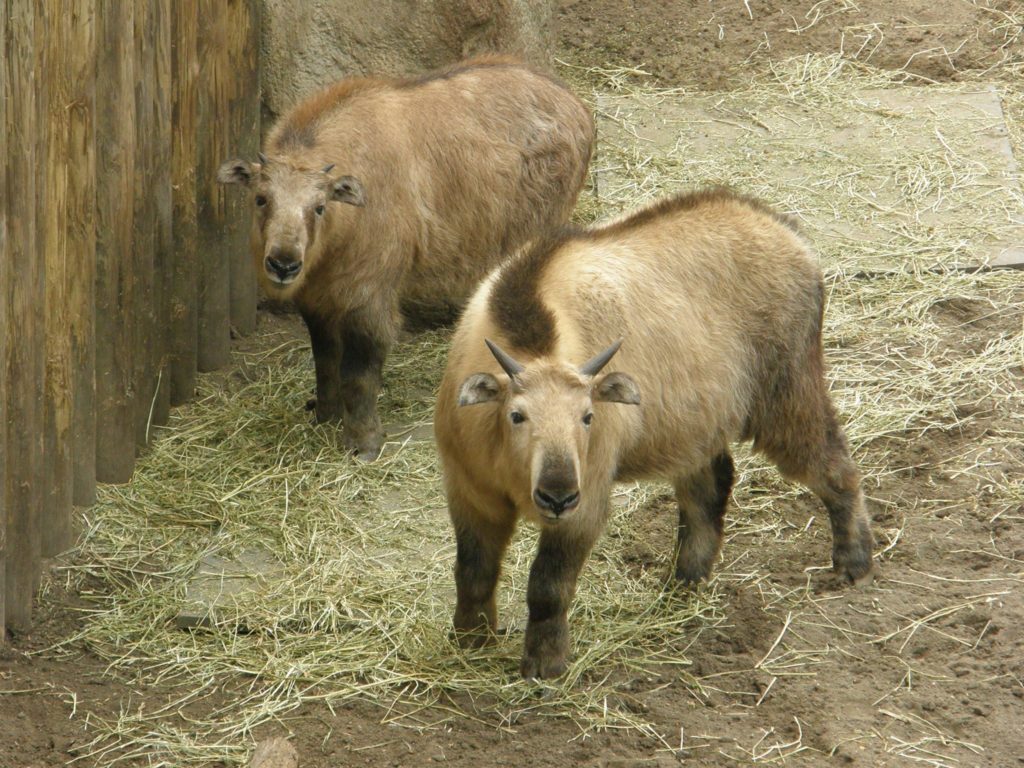
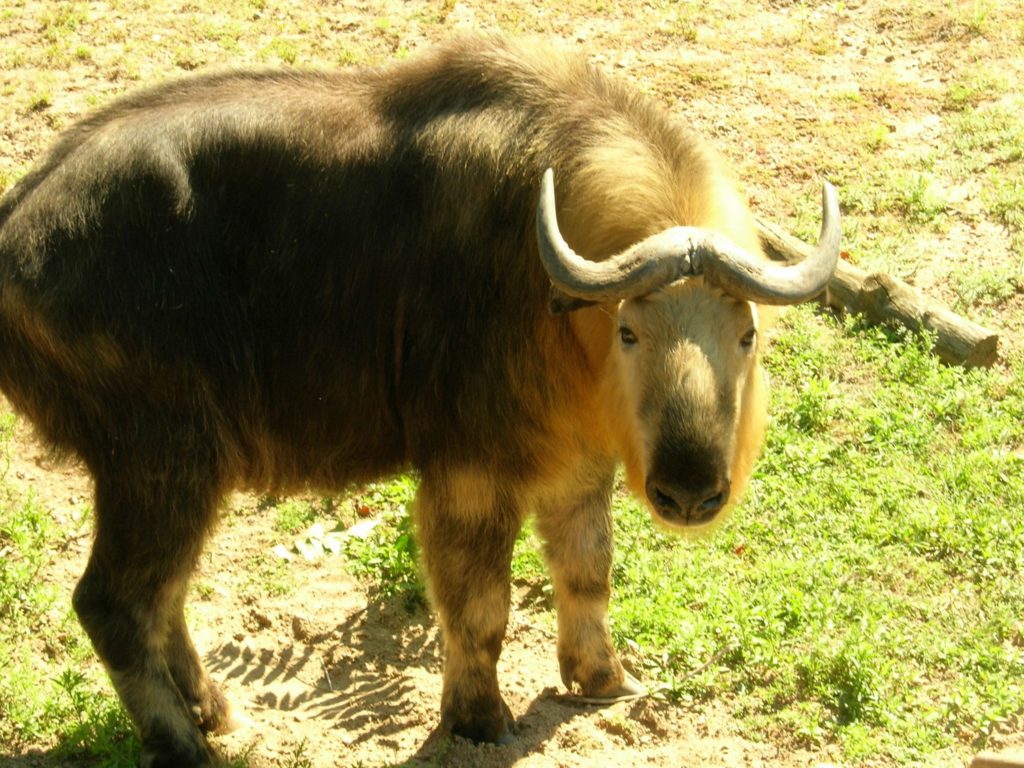
Bovids as a whole, evolved roughly 15 million years ago. The earliest known fossils of a relative to the Takin was found in China and dates back 2 to 5 million years. The Takin has long been linked and thought to be closely related to the Musk Ox. However, DNA evidence has shown they are not all that close and rather their similar appearance is more of a result of convergent evolution.
The range of the Takin is in the alpine regions of Asia, around elevations of 3,000 to 15,000 feet (1,000 to 4,500 meters).
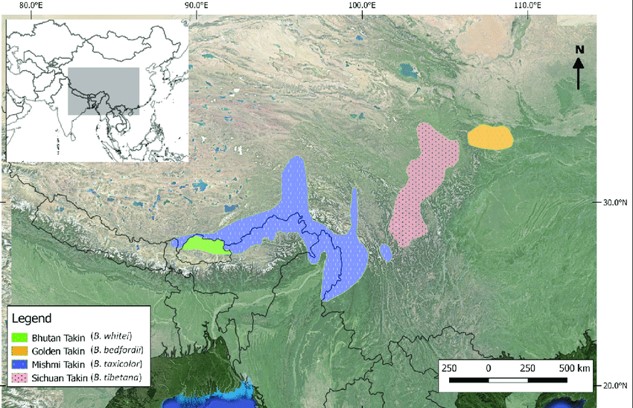
Takin Physiology
The San Diego Zoo describes the Takin as an animal with horns like a wildebeest, a nose like a moose, a tail like a bear, and a body like a bison, the takin (rhymes with rockin’) looks like a character from Dr. Seuss. These animals are actually quite large and can stand 3.3 to 4.5 feet (1 to 1.4 m) at the shoulder. They can be 5 to 7.3 feet (1.5 to 2.2 m) long. Takin can weigh over 600 lbs. (280 kg) for females and 770 lbs. (350 kg) for males.
Other Takin facts include:
- Can live up to 10 years in the wild, 12 years under human care. However, some data indicates they may live into their late teens
- Their large nose is like that of a Saiga. This is important as the large nose allows air to be warmed up before they enter the lungs
- Takin skin secretes an oily substance that coats their hair that acts as a water propellent
- They eat a variety of plants and will either graze or browse, depending on which plant species are abundant at the time
- Takins travel trails to salt licks, which undoubtedly provide minerals but may also help neutralize plant toxins
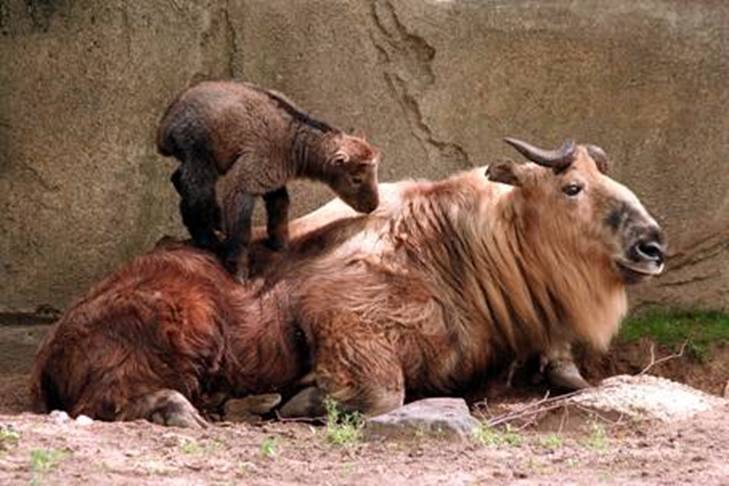
Takin Conservation
Takin are classified as Vulnerable and their populations are decreasing. Estimates for the subspecies include:
- Golden Takin at 5,500 in latest estimates
- Mishmi Takin at 3,500
- Sichuan Takin no hard numbers but a few thousands
- Bhutan Takin no hard numbers 500-700 (SD Zoo)
- Overall around 7,000 to 12,000 left
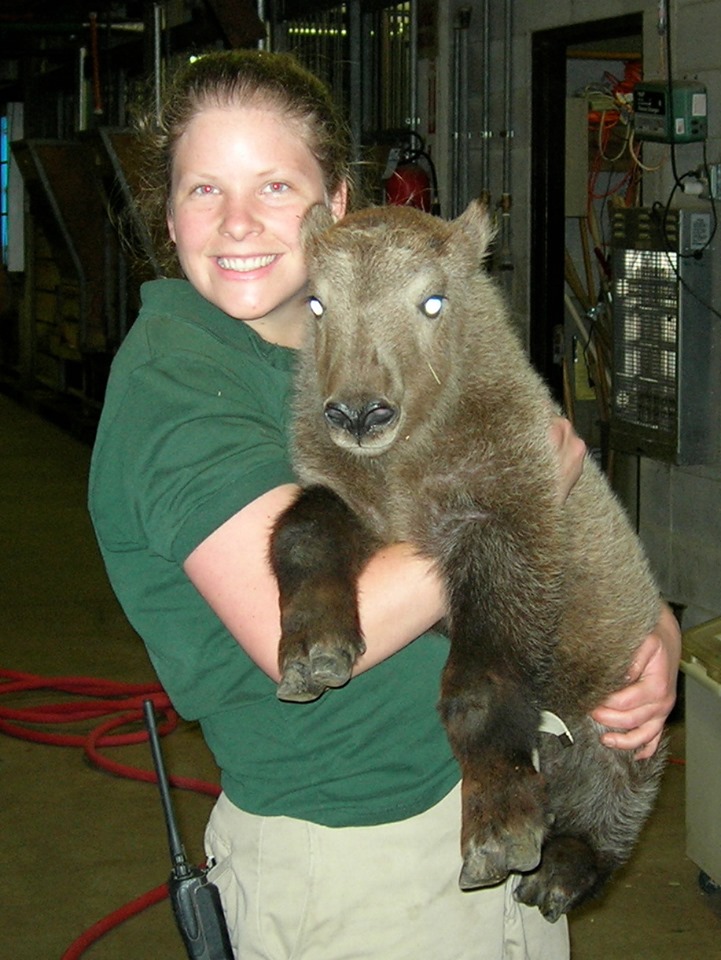
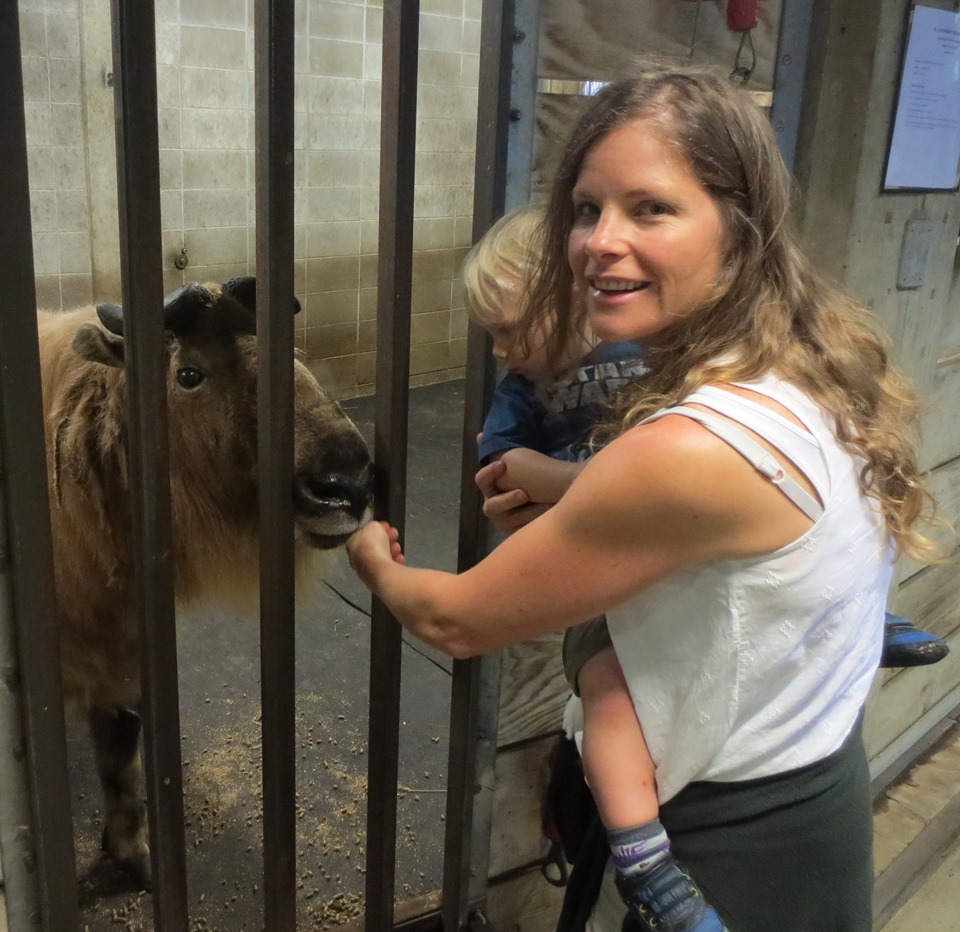
Humans are having a direct negative impact on Takin. Habitat loss, hunting, and even climate change all are current pressures for the Takin. 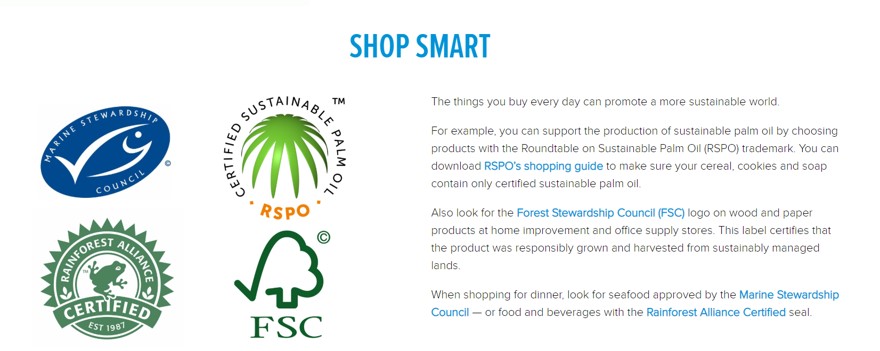
Organizations to Support

